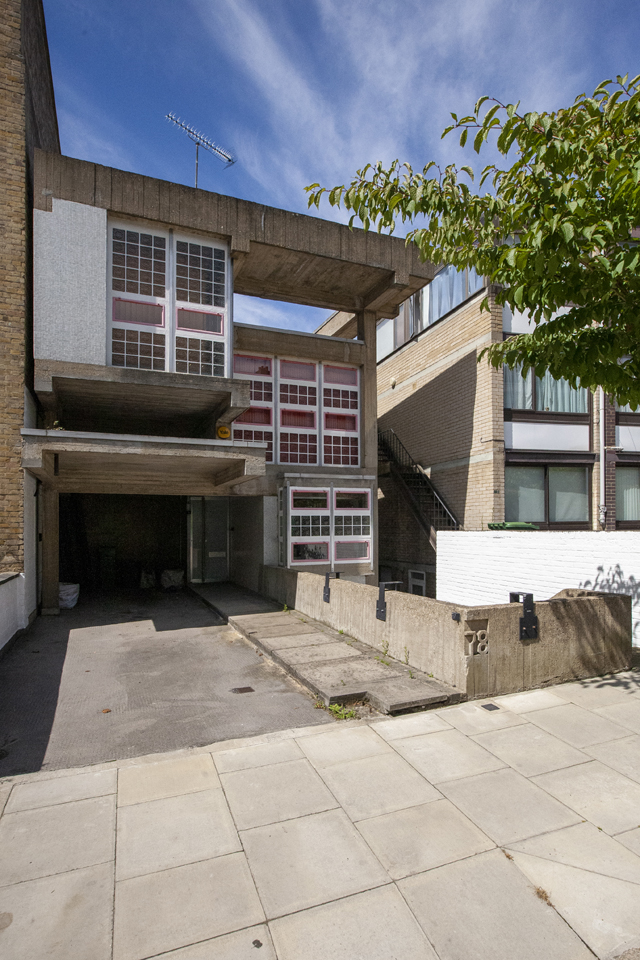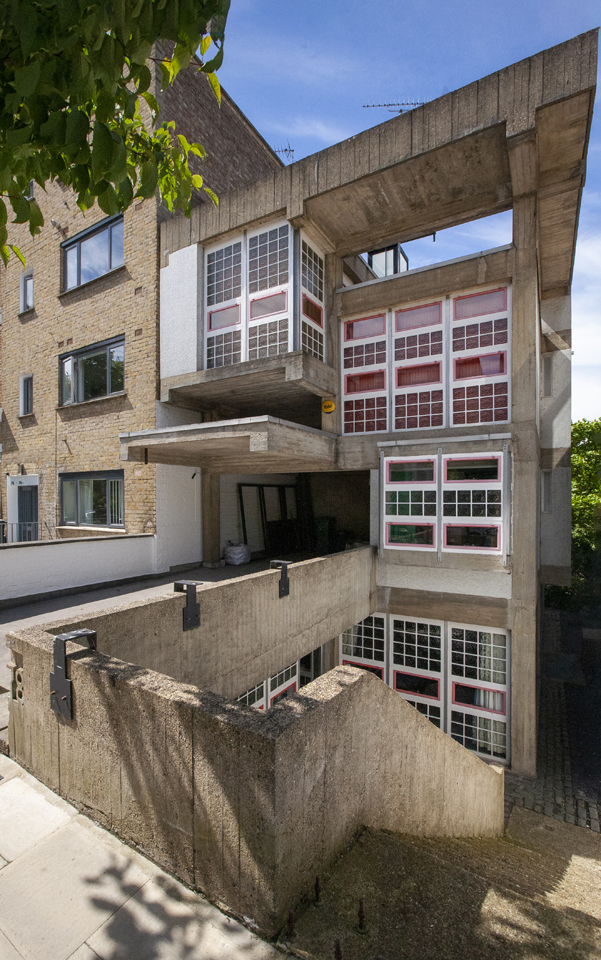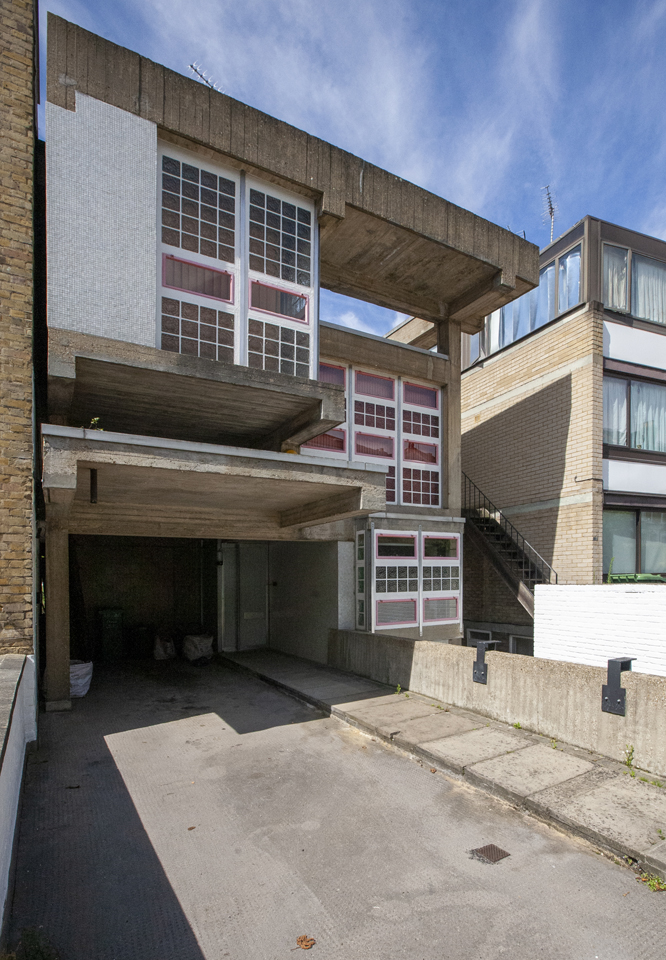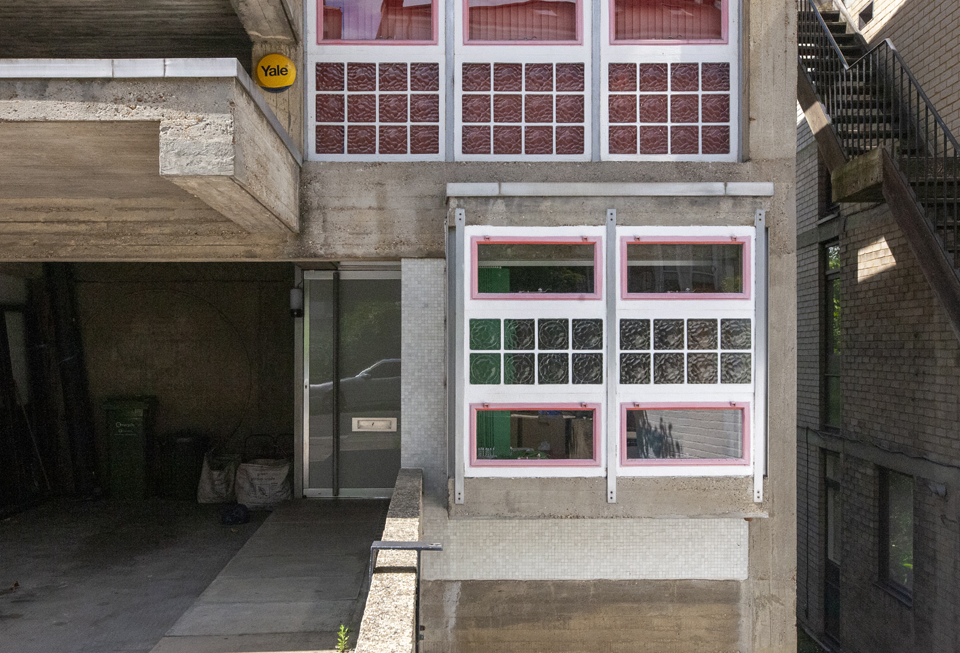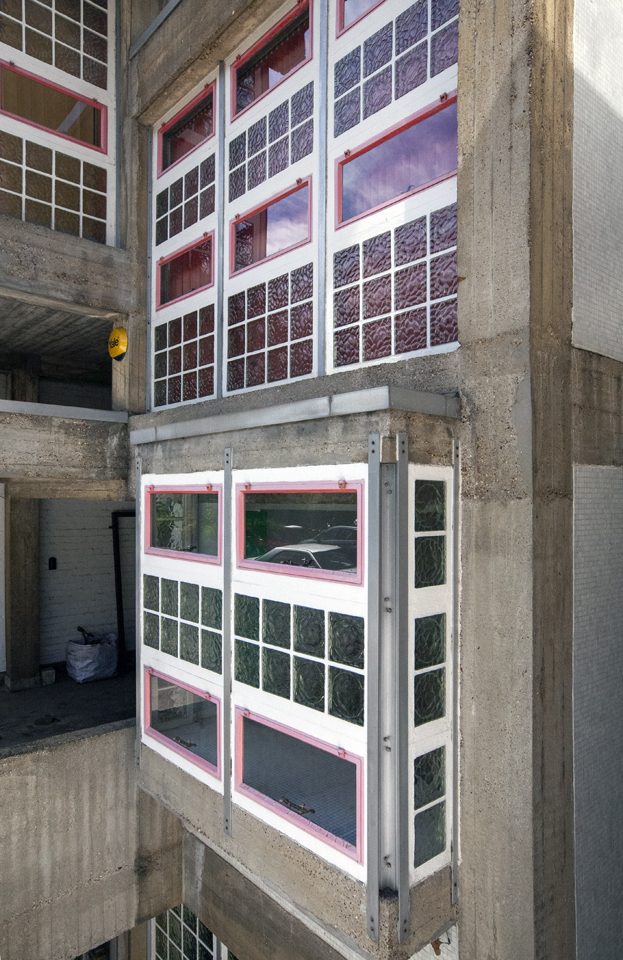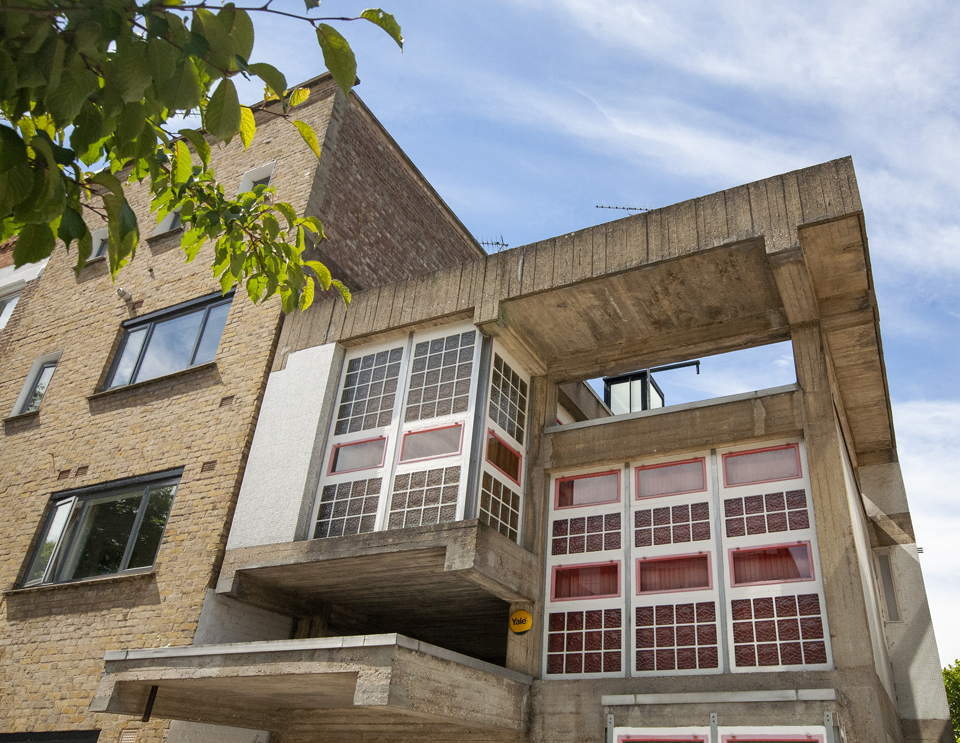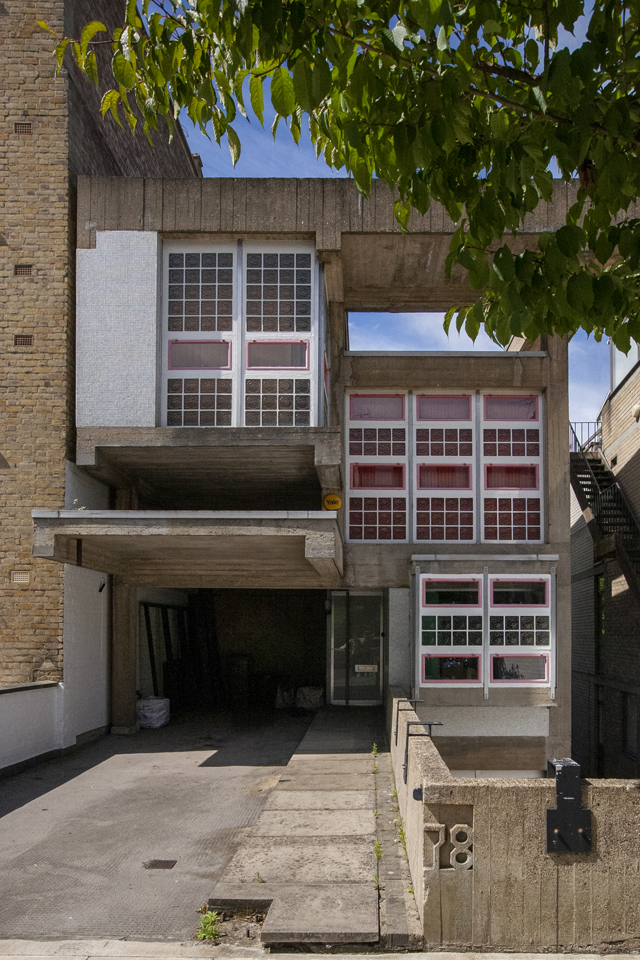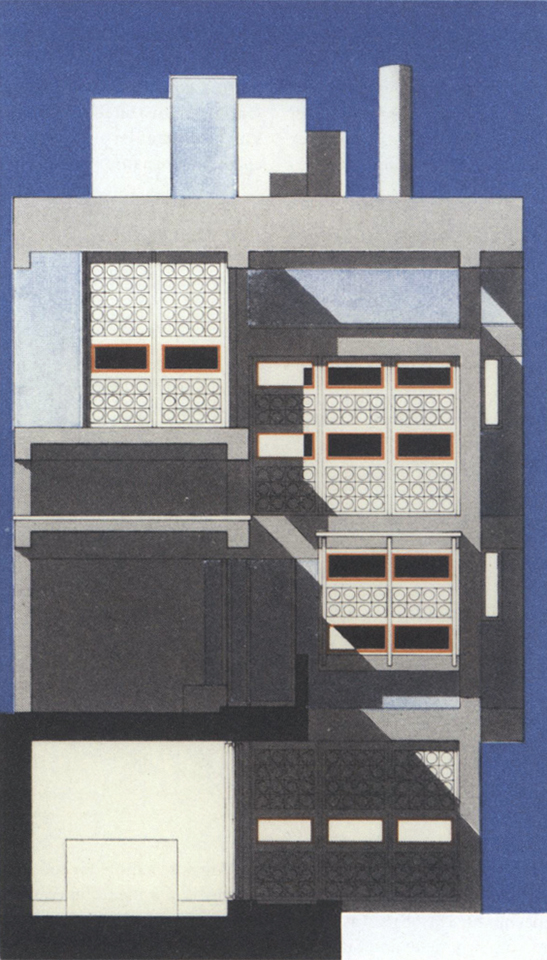78 South Hill Park
1965
Illustrative of the vagaries of the British listing system, this house, that has achieved superstar status amidst the popularity of appreciating brutalism, was initially turned down for protection in 2011 [1]. New Brutalism is a handy catch all by which to classify this building, but belies its manifold influences that evidence Housden’s plurality in his own appreciation of architectural history. Listed amongst Housden’s known influences on the scheme are the Rietveld Schroder House, Aldo van Eyck’s Amsterdam Orphanage, Pierre Chareau’s Masion de Verre and Adol Rading’s house for the 1929 Breslau Werkbundsiedlung. Critic Edwin Heathcote adds Corbusier, Giuseppe Terragni, Frank Lloyd Wright, Adolf Loos and Carlo Scarpa to that list in his reading of the house [2]. The official list entry phrases its eclecticism thus: ‘unique piece of architectural vision and ingenuity that syntheses a great wealth of influences and ideas and is executed with an intensity and conviction that is entirely personal’ [3]. Classical and primitive motifs also found their way into Housden’s unique assemblage and perhaps it was this idiosyncratic combination of elements that left assessors initially perplexed when trying to contextualise the scheme to afford it value within a British architectural context. Tom Brooks’ detailed examination of Housden’s life and career made significant strides in contextualising the house, critically, historically and culturally. In his master’s thesis and subsequent paper in the AA Files, Brooks places Housden’s formative architectural education amidst the critical uncertainty in art and architecture in coming to terms with how the International Style was inflected through British sensibilities and environment, or the ‘seeming dichotomy between Englishness and Modernism’ [4]. Much of this discourse was played out by a set with links to Hampstead and its growing tradition for radicalism and experimentation, exemplified by the English avant-garde’s convergence on Mall Studios, Tasker Road and the community of emigré artists and architects that revolved around Wells Coates’ Lawn Road Flats. Hermann Muthesius’ Das Englische Haus (1904), Nikoluas Pevsner’s Pioneers of the Modern Movement (1936) and John Gloag’s The Englishman’s Castle (1944) all in their own way attempted to reconcile earlier histories with new ideas in architecture and Brooks suggests this as part of a ‘further mandate … to better align the teachings of the 1920s and 1930s with a residual Englishness’ [5]. At the Architectural Association, Housden became involved with the AA Journal and his reprise and reconsideration of Connell Ward and Lucas’ houses and the writing of Philip Morton Shand contributed to the continuing debate between the universal and specific qualities of modernism. Brooks argues convincingly that ‘No 78 remains underwritten by an inescapable Englishness’.
Housden acquired the site that backs on to one of the swimming ponds of Hampstead Heath from John Killick. Killick’s future business partners, Howell and Amis had developed the adjacent site as a narrow terrace of modern houses for themselves and friends between 1954 and 1956. Like its precedent the Rietveld Schroder House, No 78 adjoins an existing terrace of brick houses. A raft of reinforced concrete ground beams caries a post and slab superstructure with infill panels of concrete block faced with Venetian glass mosaic, glass block set in aluminium reinforced concrete and bands of Crittall windows. The orthogonal recesses and protrusions of the front elevation mix references form Charreau, Terragni and Frank Lloyd Wright. Housden and his family moved in in 1964 and the exterior was nominally complete by 1965. The interior however was an ongoing project to which Housden added when funds would allow. According to his children, ‘Dad used to give tours to architectural students and people who had seen the house from the Heath and would knock on the front door, asking to look around’ [6]. In terms of its legacy (now assured by virtue of its popularity and its eventual listing in 2014 two weeks before Housden’s death), its subversive eccentricity and Housden’s belligerent audacity in its design and construction will inevitably become its folklore and its significance as a truly avant-garde building will be increasingly apparent.
[1] As recalled by Housden’s daughters. https://www.themodernhouse.com/journal/open-house-architect-brian-housdens-house-inspired-by-early-european-modernist-architecture/
[2] https://www.wallpaper.com/architecture/78-south-hill-park-brian-housden-british-modernism
[3] https://historicengland.org.uk/listing/the-list/list-entry/1421137?section=official-listing
[4] Brooks, T. (2013) ‘The Curious Case of Brian Housden’, AA Files, No. 66, pp.42-53.
[5] Brooks, T. (2013) ‘The Curious Case of Brian Housden’, AA Files, No. 66, pp.42-53.
[6] https://www.themodernhouse.com/journal/open-house-architect-brian-housdens-house-inspired-by-early-european-modernist-architecture/
